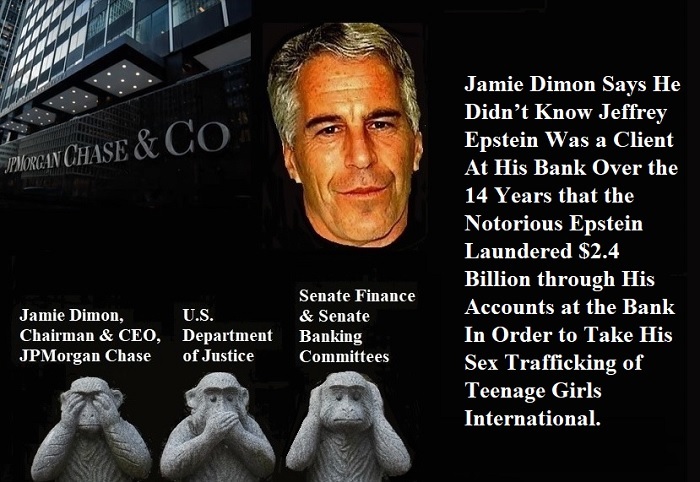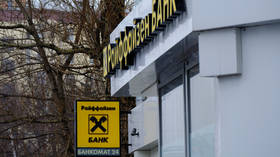Will The Next Bank Bailout Bankrupt America?
by Dennis Miller, The Burning Platform:

Can bank bailouts bankrupt America? Why would congress let it happen?
In a recent Daily Pfennig, friend Chuck Butler tells about educating his grandsons about the worst president there has ever been:
“…. I couldn’t let that one slip … I explained to them that Woodrow Wilson was the all-time worst president, … culminating with, he ushered in the Federal Reserve….”
Minnesota Congressman Charles A. Lindbergh, (father of the famous aviator) warned:
“The financial system … has been turned over to the Federal Reserve Board. That board administers the finance system by authority of … a purely profiteering group.”
Banks versus America
Investopedia provides the History of the FDIC (Federal Deposit Insurance Corporation):
“Due to the financial chaos triggered by the stock market crash of October 1929, more than 9,000 banks had failed by March of 1933, signaling the worst economic depression in modern history.
…. The FDIC’s purpose was to provide stability to the economy and the failing banking system.
…. The FDIC was declared a success when only nine additional banks closed in 1934.
…. The period from 1933-1983 was characterized by increased lending without a proportionate increase in loan losses….
…. In the ’60s, banking operations started to change. Banks began taking nontraditional risks and expanding the branch networks into new territory with the relaxation of branching laws. …. This trend would finally catch up to the banking industry….
…. The 1980s saw the beginning of bank deregulation.
…. These laws authorized the elimination of interest rate ceilings, relaxing restrictions on lending and overruling the usury laws of some states.
…. Congress passed the Garn-St. Germain Depository Institutions Act, which furthered bank deregulation and the methods for dealing with bank failures. All these events led to a 50% increase in loan charge-offs and the failure of 42 banks in 1982.
An additional 27 commercial banks failed during the first half of 1983, and approximately 200 had failed by 1988. For the first time in the post-war era, the FDIC was required to pay claims to depositors of failed banks, which highlighted the importance of the FDIC and deposit insurance.”
For the last several months I’ve bookmarked several articles from an excellent publication, Wall Street On Parade. (WSOP) They look behind the scenes.
WSOP’s article, Why Is Wall Street the Only Industry in America With Access to the Fed’s Endless Money Machine?, explains the bailout history:
“The obscene money spigot from the New York Fed to Wall Street’s trading houses didn’t start with the epic financial crisis of 2008…. It started following the dot.com bust, which was fueled by fraudulent research from Wall Street’s trading houses. The money from the Fed to Wall Street simply flowed under the cover of the 9/11 crisis.”
Much of the blame for the 2008 bank bailout was repealing the Glass-Steagall Act, which allowed banks to merge with investment firms, now commonly called “casino banks”.
As part of the 2008 bailout, congress passed the Dodd-Frank financial reform bill which was supposed to make these megabanks safer so a bailout would never happen again. The highest risk gambles, derivatives, were supposed to be eliminated from federal protection.
In 2014, Pam Martens tells us Citigroup lobbied for deregulation, including derivatives.
“Citigroup snuck its deregulation legislation into the $1.1 trillion Cromnibus spending bill…. Citigroup was able to pass this outrageous deregulation legislation because the majority of Congress and the President “lacked the political will” and the “fortitude to critically challenge the institutions and the entire system they were entrusted to oversee. (Emphasis mine)
…. With the willing participation of Congress and the President (the country is) set up for the next financial collapse….
| The legislation … allows Citigroup and other Wall Street banks to keep their riskiest assets – interest rate swaps and other derivatives – in the banking unit that is backstopped with FDIC deposit insurance, which is, in turn, backstopped by the U.S. taxpayer, thus ensuring another bailout … if it blows itself up once again from soured derivative bets.”(Emphasis mine) |
Much has been in the news recently about the Fed intervening in the repo market. WSOP tells us “The Fed Has Created the Big Lie for Congress on its Repo Loans while the New York Fed Blocks Freedom of Information Requests”:
“There is nothing in … the Federal Reserve Act, that allows it to be the lender-of-last-resort to the trading houses on Wall Street. The Fed’s Discount Window, which is legally allowed to make emergency or seasonal loans, is restricted by law to just deposit-taking banks – not Wall Street trading houses.
And yet, bailing out Wall Street is exactly what the Fed has been doing … and what it did secretly to the tune of $29 trillion during the financial crisis from December 2007 to the middle of 2010.
…. The Fed’s current money spigot … impacts the economy because it is ballooning the size of the Fed’s balance sheet (now back above $4 trillion)which the U.S. taxpayer is ultimately on the hook for. (Emphasis mine)
It impacts the U.S. economy because it is worsening the existing bubble that already exists in the stock market, thus making the inevitable bursting of the bubble worse.
…. Right on cue, the New York Fed, the regional Fed bank that directly controls this money spigot to Wall Street and was the stonewaller-in-chief during the financial crisis, is back to its old games again of denying, thwarting or stonewalling requests for information on these repo loans from the public and the media.”
The FDIC has been hijacked
The FDIC was created to protect depositors from losing money when bankers make bad decisions. When a bank failed, the FDIC stepped in and paid the depositors and disposed of the banking assets selling the bank or part of their assets to other banks.
As banks became deregulated, the big banks bought up or merged with the smaller banks to create HUGE banking organizations. The number of US commercial banks has declined dramatically. In 1984 there were over 14,000 commercial banks, now there are less than 5,000.
Read More @ TheBurningPlatform.com
Loading...



